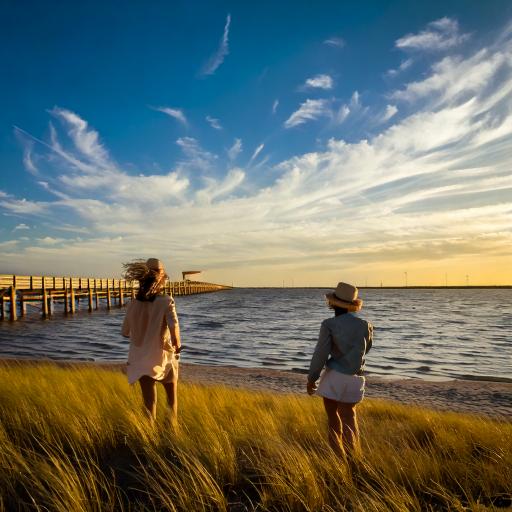If you’ve ever dipped your toes in the Gulf Coast waters and thought, “Why does this look like sweet tea?”—you’re not alone. The brown tint in the water isn’t a sign of pollution; it’s nature at work, thanks to tannins, silt, and a little help from our mighty rivers. Let’s dive into what gives our water its unique look and the exciting possibility of a future Blue Water Project that could transform sections of the coast.
What Causes the Water’s Brown Color?
The rivers flowing into the Gulf bring tannins—organic compounds from decaying leaves and vegetation—and silt, tiny soil particles, into the Mississippi Sound. These tannins are what give tea, wine, and sometimes our water that familiar brown hue. The barrier islands, such as Ship Island and Cat Island, trap the tannin-rich waters inside the Sound, while the clearer waters remain just on the other side.
But don’t worry! According to the Mississippi Department of Environmental Quality (MDEQ), the water is safe for swimming and recreational activities. The oil spill is no longer a concern, but it’s always wise to check with MDEQ for up-to-date water quality reports before heading out.
The Blue Water Project: A Clear-Water Dream
A few years ago, an ambitious idea called the Blue Water Project was proposed to tackle the brown water along the coast. The plan? Construct a horseshoe-shaped levee intersecting with the beach to create a circular, filtered water space. Inside the structure, oyster beds would act as natural filters, improving the water quality.
The project was to begin in Silver Slipper and Clairmont Harbor, before gradually expanding toward Bay St. Louis. If the plan comes to life, it could bring crystal-clear waters to parts of the coast, boosting tourism and adding to the Gulf Coast’s charm.
Tides of Appreciation: The Beauty in Brown
While the Blue Water Project offers hope for a clearer future, the brown waters of the Mississippi Gulf Coast still hold their own beauty. They play a crucial role in supporting marine life and maintaining the coastal ecosystem. Understanding the science behind the water helps us appreciate its unique role and charm.
Conclusion
Whether you’re swimming in tea-colored waters or one day floating in crystal-clear seas, the Gulf Coast has its own unique magic. Thanks to the MDEQ, we know the water is safe, and with the Blue Water Project on the horizon, the coast might soon offer both natural beauty and postcard-perfect waters. So grab your flip-flops, check the water quality with MDEQ, and dive into the charm that only the Mississippi Gulf Coast can offer.
Whether you’re admiring nature’s tea-tinted waters or dreaming of a clear-water coast, the Mississippi Gulf Coast offers something for everyone. And no matter what, I’ll be there to soak it all in—sweet tea vibes and all. 🌊

